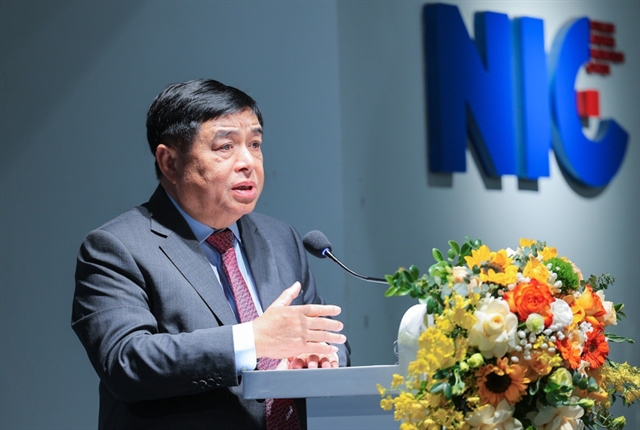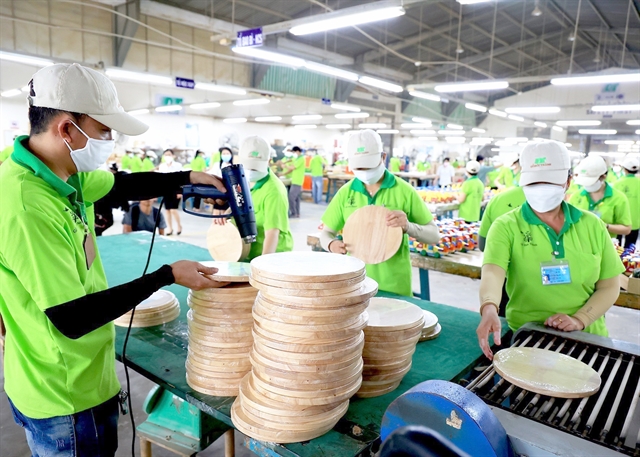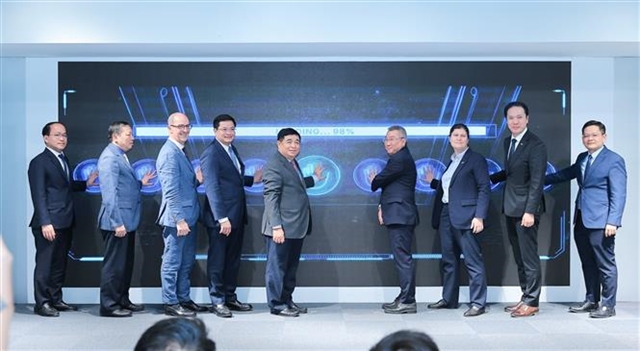 Society
Society

 |
| Labourers working at Đức Thành Wood Processing Joint Stock Company in HCM City’s Gò Vấp District. — VNA/VNS Photo Hồng Đạt |
HCM CITY — In response to the city's slowing labour productivity growth, the HCM City People’s Committee has issued a labour and employment strategy for the 2023-25 period, with a vision to 2030.
The strategy aims to increase labour performance in the city compared to the national average and to answer the need to restructure key economic sectors in strategic areas.
This move is considered a sustainable and fundamental solution, and is expected to have a multifaceted impact on the city's labour market and the regional and national labour markets.
The strategy recognises that the labour market must adapt to the profound global shifts that are currently underway.
As the core values and survival conditions of the economy revolve around the twin pillars of "green" and "digital", the labour market cannot remain immune to these transformations.
Việt Nam’s establishment of a "comprehensive strategic partnership" with major powers, particularly in the areas of microelectronics, semiconductors, and artificial intelligence, highlights the need to prioritise the training of high-quality technology manpower.
Moreover, in a world where geographical boundaries are becoming increasingly blurred, the strategy emphasises the importance of interconnectedness, diversity, and multimodality in trade, production, and distribution.
To align with the priority of developing high-tech and digital industries and becoming a leading regional service centre, the city’s strategy calls for the establishment of concentrated high-tech industrial parks and investments in strategic fields such as robotics, biotechnology, and specialised medical services.
This dual approach aims to create a high-quality, skilled labour market alongside the planning and development of smart cities, satellite cities, and green cities.
The city focuses on forming 16 business models in nine main technology groups of mobile internet, cloud computing, big data, artificial intelligence, fintech, IoT, advanced robotics, additive manufacturing, and semiconductor technology.
The strategy also mentions e-commerce and the need to reskill the city workforce in the new context.
With the strong emergence of commerce on social platforms, it is urgent to update labour and business laws and regulations, and provide comprehensive training programmes in technical skills, soft skills, and legal knowledge for both businesses and workers.
The city now possesses certain advantages as a leader among the top five localities in the country in the Provincial Green Index (PGI).
The strategy highlights the urgent need for green skills associated with green jobs.
Green jobs tend to require more skills and a higher level of scientific and technological expertise than traditional ones.
The city is going to expand its inter-regional links and increase the competitiveness of its economy.
This depends on another strength of the city – a surplus and young workforce, with labourers from 15 years old and up accounting for 50 per cent of the city's population.
More than 87 per cent of the current workforce have been trained, mostly at university level, not to mention the manpower from other countries.
The city must diversify its methods of attracting investment in industries and sectors that encourage investment or new industries and models in order to ensure sustainable employment in the context of the transition to a green economy, a circular economy, a digital economy, and a sharing economy.
This includes the ongoing implementation of policies to attract experts and talents to the semiconductor industry.
The strategy advocates for public-private partnership in investment, with a focus on mobilising foreign direct investment to both generate capital flows and leverage expertise in labour training and retraining, organisational management and market development.
The effective linkage between universities, academies, businesses, and workers is also important.
The strategy is a solution for labour productivity growth, a lower unemployment rate, living standard improvement, as well as a method to maintain the health of businesses within the city's vibrant economic and social landscape. — VNS




